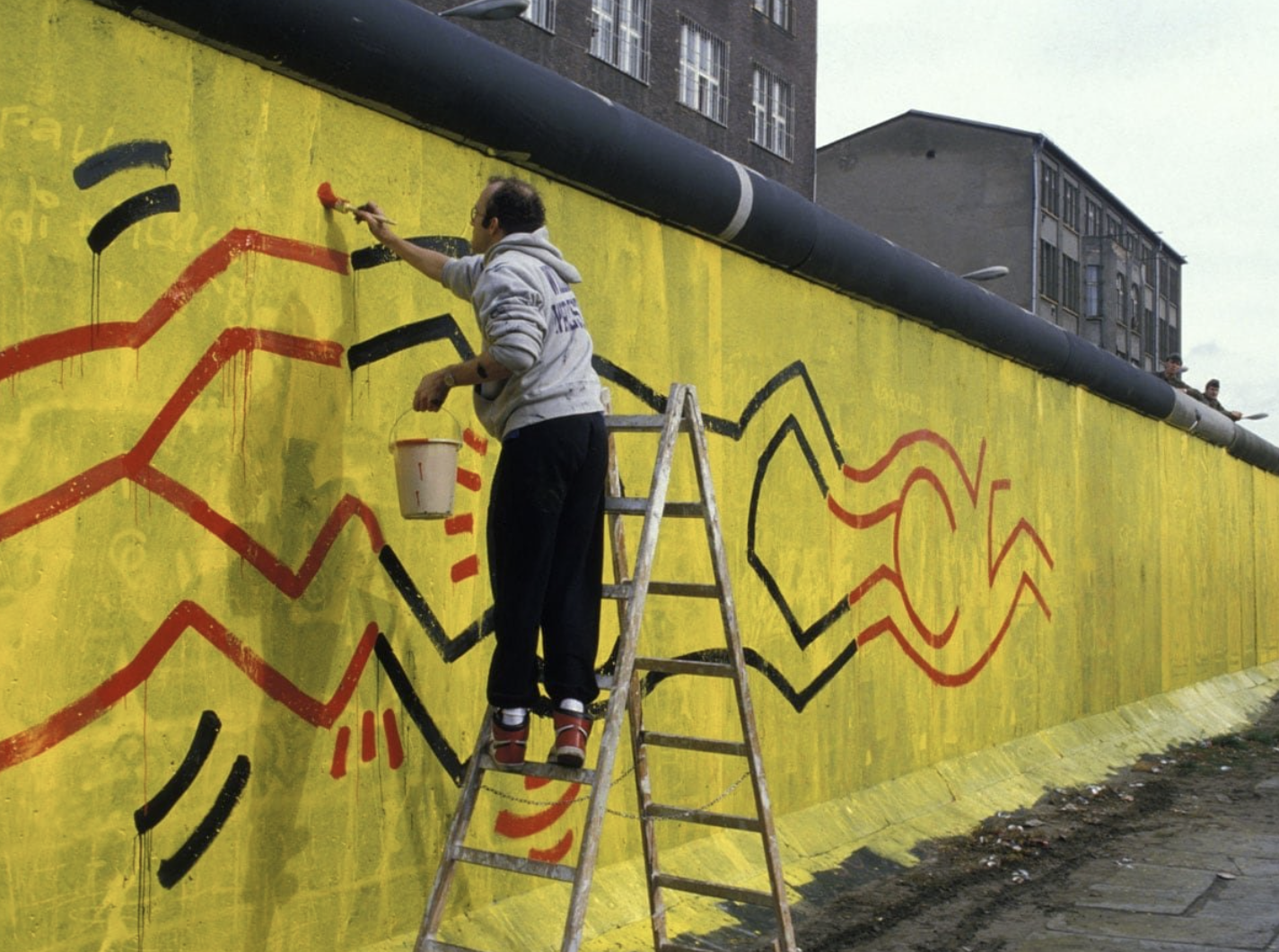
Keith Haring, born in 1958 in Pennsylvania, became one of the most influential figures in contemporary art. From a young age, he showed a deep interest in art, experimenting with collage and sketches. His creative journey would eventually lead him to New York City, where he would become a central figure in the underground art scene and use street art as a platform for social change.
The New York Art Scene and Haring’s Rise
In the late 1970s, after studying advertising in Pittsburgh, Haring moved to New York to attend the School of Visual Arts (SVA). It was here that he fully immersed himself in the city’s vibrant and rebellious art culture. The late 70s and 80s were a time of explosive growth for alternative art movements, and artists like Andy Warhol and Jean-Michel Basquiat were starting to make waves.
Haring was drawn to the emerging street art and graffiti scene, embracing the raw energy of hip-hop culture, which included dancers, DJs, and graffiti artists. As he began experimenting with new media and techniques, Haring found himself creating art on unconventional surfaces, such as subway advertisements and the sides of buildings. These early works marked the birth of his signature style—bold, simple figures, often using bright colors and graphic lines.
Art with a Purpose: Haring’s Socially Charged Street Art
Keith Haring’s artwork was deeply influenced by his social consciousness. He used his art to address critical issues facing society, from racism and homophobia to the dangers of capitalism and environmental destruction. His work was often minimalist, using simple lines and iconic symbols that echoed the look of cartoons and comic strips. This style made his art accessible to a broad audience, reinforcing his belief that art should reach as many people as possible.
Haring’s figures—dancing, contorting, or interacting in vibrant compositions—became powerful symbols for social change. His street art was more than just visual expression; it was a form of activism, aimed at starting conversations about the world around him.
The Legal Struggles and Early Fame
Despite his growing influence, Haring faced numerous legal challenges due to his street art. He was arrested several times for vandalism as his artwork often appeared in public spaces without permission. However, his work continued to resonate with the public, and soon he became a sought-after artist.
In addition to his street work, Haring was actively involved in the New York nightclub scene, particularly Club 57, where he met influential artists, including Andy Warhol, who became one of his mentors. Haring’s notoriety only grew as he was commissioned for public art projects, and he began exhibiting in major galleries and museums worldwide.
Global Impact and Social Activism
Keith Haring’s success seemed to skyrocket overnight. His murals and public installations appeared in cities across the globe, from Rio de Janeiro to Berlin, and even a massive 300-meter-long fresco on the Berlin Wall. His works often addressed sensitive topics such as racism, violence, and the LGBTQIA+ community, which made him a fearless advocate for social justice.
Haring was not afraid to tackle controversial subjects head-on. His art delved into issues like the dangers of consumerism, the perils of mass media, and the environmental crisis, all while remaining visually accessible and emotionally charged.
Keith Haring’s Belief in Universal Art
One of Haring’s most famous quotes is, “Art is nothing if you don’t reach every segment of the people.” This philosophy guided his entire career. He believed that art should be available to everyone, not just confined to galleries and museums. By creating public art that was open to all, Haring aimed to communicate messages of peace, equality, and love.
His work, often filled with bold, graphic figures, became a universal language for change. Through his distinctive style, Haring’s art transcended traditional boundaries and resonated deeply with people from all walks of life.
The Themes of Haring’s Art
Keith Haring’s work covered a wide range of social and political themes, each depicted in his unmistakable visual language. Some of the key subjects he explored include:
- Capitalism: Haring criticized the greed and excesses of consumer culture, seeing it as detrimental to society.
- Religion: While respecting individual beliefs, Haring rejected religious authority and control.
- Mass Media: He expressed concern about the overwhelming influence of technology and media on modern life.
- Racism: Haring was a staunch advocate for equality, using his art to combat racial injustice.
- Ecology: Haring was passionate about environmental issues, warning of the negative impacts of human actions on nature.
- Homophobia: As a member of the LGBTQIA+ community, Haring used his art to support LGBTQIA+ rights and combat homophobia.
Haring’s Legacy
Tragically, Keith Haring passed away from AIDS-related complications in 1990 at the young age of 31. Despite his short life, his influence on the art world and beyond is immeasurable. Haring’s works continue to inspire artists and activists, and his legacy lives on in the art, murals, and movements he helped shape.
Today, Keith Haring is remembered not only for his vibrant, instantly recognizable art but also for his fearless commitment to using his platform to speak out on issues that mattered. His social street art continues to be a beacon for change, and his message of love, equality, and activism remains as relevant today as it was during his lifetime.




